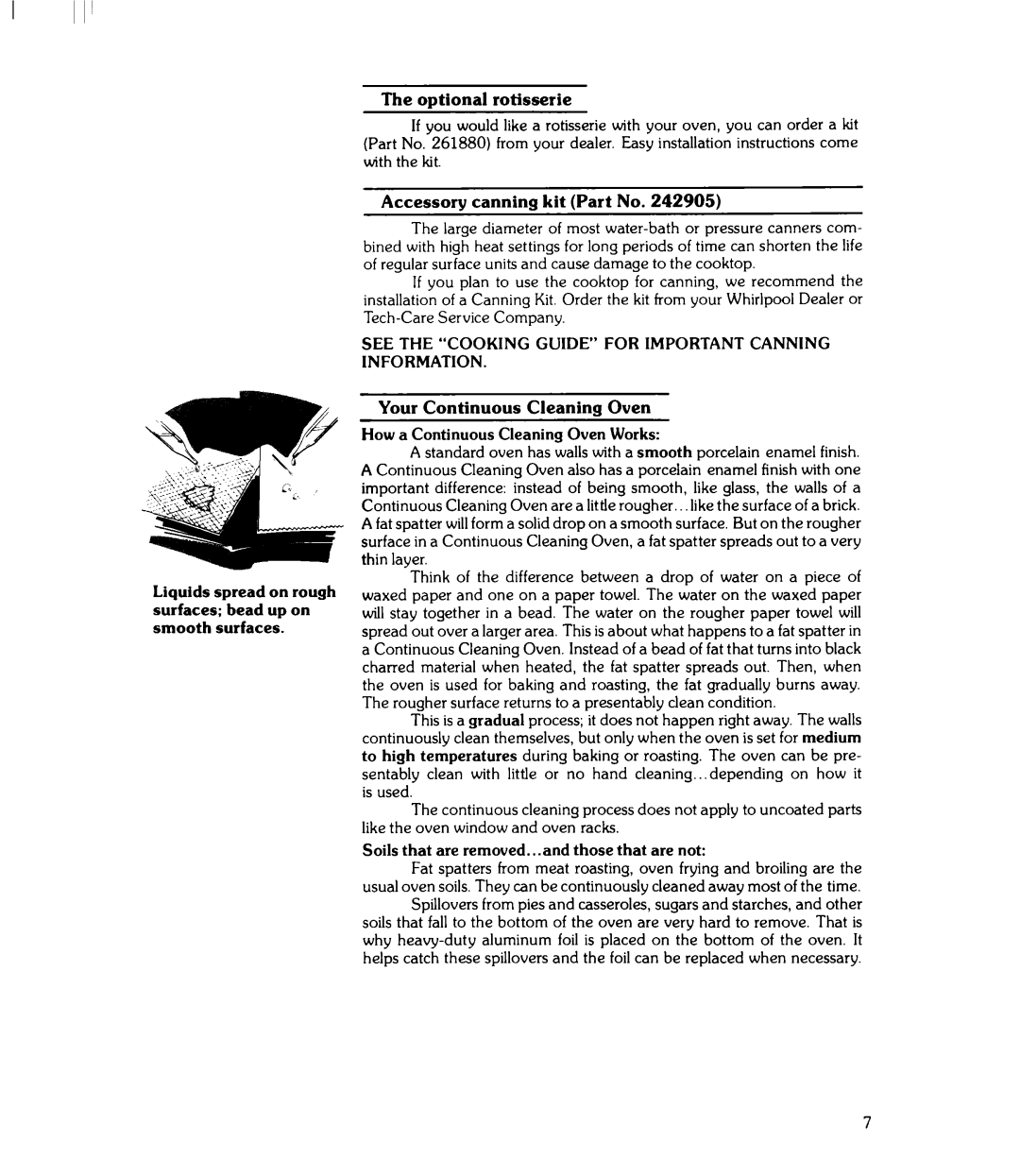
II I’
The optional rotisserie
If you would like a rotisserie with your oven, you can order a kit (Part No. 261880) from your dealer. Easy installation instructions come with the kit.
Liquids spread on rough surfaces; bead up on smooth surfaces.
Accessory canning kit (Part No. 242905)
The large diameter of most
If you plan to use the cooktop for canning, we recommend the installation of a Canning Kit. Order the kit from your Whirlpool Dealer or
SEE THE “COOKING GUIDE” FOR IMPORTANT CANNING INFORMATION.
Your Continuous Cleaning Oven
How a Continuous Cleaning Oven Works:
A standard oven has walls with a smooth porcelain enamel finish. A Continuous Cleaning Oven also has a porcelain enamel finish with one important difference: instead of being smooth, like glass, the walls of a Continuous Cleaning Oven are a little rougher.. like the surface of a brick. A fat spatter will form a solid drop on a smooth surface. But on the rougher surface in a Continuous Cleaning Oven, a fat spatter spreads out to a very thin layer.
Think of the difference between a drop of water on a piece of waxed paper and one on a paper towel. The water on the waxed paper will stay together in a bead. The water on the rougher paper towel will spread out over a larger area. This is about what happens to a fat spatter in a Continuous Cleaning Oven. Instead of a bead of fat that turns into black charred material when heated, the fat spatter spreads out. Then, when the oven is used for baking and roasting, the fat gradually burns away. The rougher surface returns to a presentably clean condition.
This is a gradual process; it does not happen right away. The walls continuously clean themselves, but only when the oven is set for medium to high temperatures during baking or roasting. The oven can be pre- sentably clean with little or no hand cleaning. ..depending on how it is used.
The continuous cleaning process does not apply to uncoated parts like the oven window and oven racks.
Soils that are removed. ..and those that are not:
Fat spatters from meat roasting, oven frying and broiling are the usual oven soils. They can be continuously cleaned away most of the time.
Spillovers from pies and casseroles, sugars and starches, and other soils that fall to the bottom of the oven are very hard to remove. That is why
7
